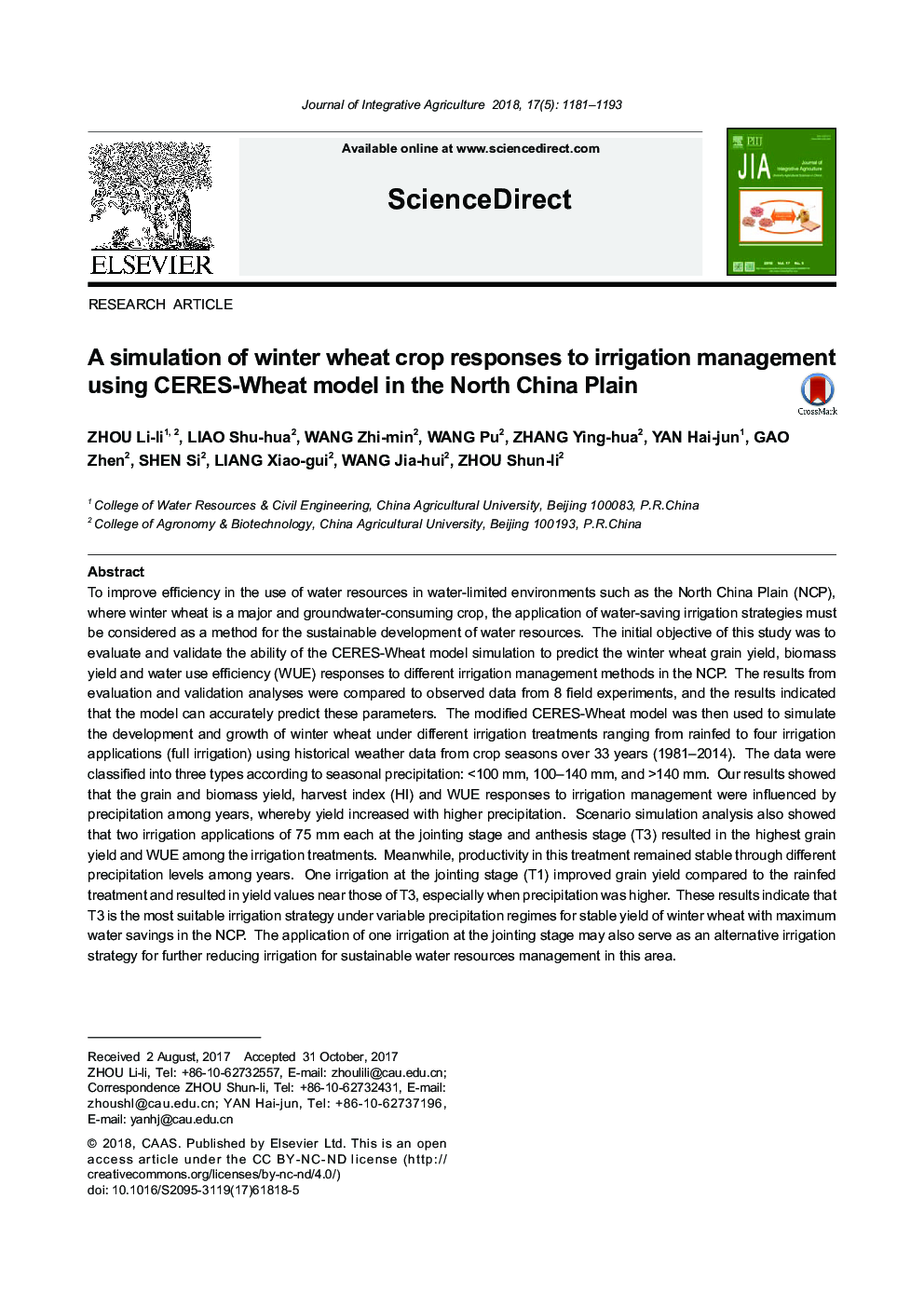| Article ID | Journal | Published Year | Pages | File Type |
|---|---|---|---|---|
| 8875660 | Journal of Integrative Agriculture | 2018 | 13 Pages |
Abstract
To improve efficiency in the use of water resources in water-limited environments such as the North China Plain (NCP), where winter wheat is a major and groundwater-consuming crop, the application of water-saving irrigation strategies must be considered as a method for the sustainable development of water resources. The initial objective of this study was to evaluate and validate the ability of the CERES-Wheat model simulation to predict the winter wheat grain yield, biomass yield and water use efficiency (WUE) responses to different irrigation management methods in the NCP. The results from evaluation and validation analyses were compared to observed data from 8 field experiments, and the results indicated that the model can accurately predict these parameters. The modified CERES-Wheat model was then used to simulate the development and growth of winter wheat under different irrigation treatments ranging from rainfed to four irrigation applications (full irrigation) using historical weather data from crop seasons over 33 years (1981-2014). The data were classified into three types according to seasonal precipitation: <100 mm, 100-140 mm, and >140 mm. Our results showed that the grain and biomass yield, harvest index (HI) and WUE responses to irrigation management were influenced by precipitation among years, whereby yield increased with higher precipitation. Scenario simulation analysis also showed that two irrigation applications of 75 mm each at the jointing stage and anthesis stage (T3) resulted in the highest grain yield and WUE among the irrigation treatments. Meanwhile, productivity in this treatment remained stable through different precipitation levels among years. One irrigation at the jointing stage (T1) improved grain yield compared to the rainfed treatment and resulted in yield values near those of T3, especially when precipitation was higher. These results indicate that T3 is the most suitable irrigation strategy under variable precipitation regimes for stable yield of winter wheat with maximum water savings in the NCP. The application of one irrigation at the jointing stage may also serve as an alternative irrigation strategy for further reducing irrigation for sustainable water resources management in this area.
Related Topics
Life Sciences
Agricultural and Biological Sciences
Agricultural and Biological Sciences (General)
Authors
Li-li ZHOU, Shu-hua LIAO, Zhi-min WANG, Pu WANG, Ying-hua ZHANG, Hai-jun YAN, Zhen GAO, Si SHEN, Xiao-gui LIANG, Jia-hui WANG, Shun-li ZHOU,
